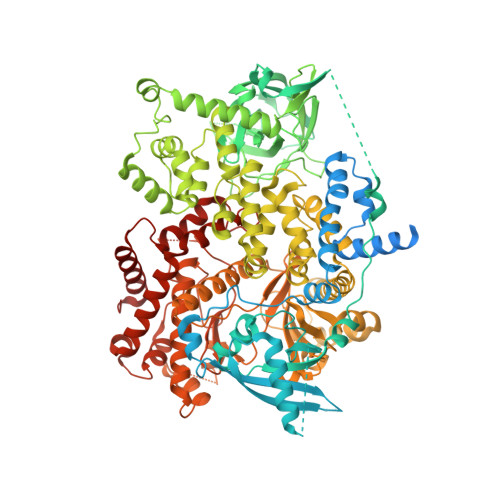Discovery of GDC-0077 (Inavolisib), a Highly Selective Inhibitor and Degrader of Mutant PI3K alpha.
Hanan, E.J., Braun, M.G., Heald, R.A., MacLeod, C., Chan, C., Clausen, S., Edgar, K.A., Eigenbrot, C., Elliott, R., Endres, N., Friedman, L.S., Gogol, E., Gu, X.H., Thibodeau, R.H., Jackson, P.S., Kiefer, J.R., Knight, J.D., Nannini, M., Narukulla, R., Pace, A., Pang, J., Purkey, H.E., Salphati, L., Sampath, D., Schmidt, S., Sideris, S., Song, K., Sujatha-Bhaskar, S., Ultsch, M., Wallweber, H., Xin, J., Yeap, S., Young, A., Zhong, Y., Staben, S.T.(2022) J Med Chem 65: 16589-16621
- PubMed: 36455032
- DOI: https://doi.org/10.1021/acs.jmedchem.2c01422
- Primary Citation of Related Structures:
8EXL, 8EXO, 8EXU, 8EXV - PubMed Abstract:
Small molecule inhibitors that target the phosphatidylinositol 3-kinase (PI3K) signaling pathway have received significant interest for the treatment of cancers. The class I isoform PI3Kα is most commonly associated with solid tumors via gene amplification or activating mutations. However, inhibitors demonstrating both PI3K isoform and mutant specificity have remained elusive. Herein, we describe the optimization and characterization of a series of benzoxazepin-oxazolidinone ATP-competitive inhibitors of PI3Kα which also induce the selective degradation of the mutant p110α protein, the catalytic subunit of PI3Kα. Structure-based design informed isoform-specific interactions within the binding site, leading to potent inhibitors with greater than 300-fold selectivity over the other Class I PI3K isoforms. Further optimization of pharmacokinetic properties led to excellent in vivo exposure and efficacy and the identification of clinical candidate GDC-0077 (inavolisib, 32 ), which is now under evaluation in a Phase III clinical trial as a treatment for patients with PIK3CA -mutant breast cancer.
Organizational Affiliation:
Genentech, Inc., 1 DNA Way, South San Francisco, California 94080, United States.















